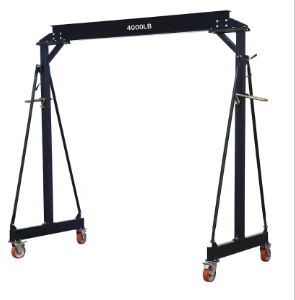Evaluating Expenses for Relocating Heavy Machinery and Equipment
Understanding the Cost to Move Heavy Equipment
Moving heavy equipment is a critical task in various industries, including construction, mining, and manufacturing. The need for relocating such machinery often arises from project requirements, routine maintenance, or equipment upgrades. However, the process of moving heavy equipment can be complex and costly, depending on several factors. This article aims to explore the various components that contribute to the cost of moving heavy equipment, providing insights for businesses looking to manage their logistics effectively.
Factors Influencing the Cost
1. Distance One of the most significant factors affecting transportation costs is the distance between the current location and destination. Longer distances typically incur higher costs due to increased fuel consumption, vehicle wear and tear, and labor expenses. Transporting equipment across state lines or internationally can further escalate costs due to regulatory and permitting needs.
2. Type of Equipment Different types of heavy equipment have varying transportation requirements. For instance, moving a bulldozer may be less expensive than transporting an oversized crane. The dimensions, weight, and fragility of the machinery play crucial roles in determining the method of transport. Oversized or particularly heavy equipment often requires specialized trailers and adherence to strict transportation regulations, which can significantly add to costs.
3. Transport Method The choice of transportation also impacts the overall cost. Options include flatbed trucks, lowboys, or even rail transport. Each method comes with its unique pricing structures, advantages, and constraints. For example, while rail might be a cost-effective option for long distances, it may not be viable for all types of equipment, especially those that need to be moved quickly or to remote locations.
4. Permits and Regulations Moving heavy equipment often necessitates special permits, particularly for oversized or overweight loads. Obtaining these permits involves fees and potentially lengthy bureaucratic processes. Furthermore, transport companies may charge additional fees to manage these permits on behalf of the client. Understanding the regulatory landscape is essential for budgeting accurately.
5. Seasonality and Timing The time of year can influence moving costs as well. Certain periods may see increased demand for transportation services, leading to higher prices. Additionally, weather conditions can impact safety and logistics, potentially causing delays or requiring alternative routes, further contributing to costs.
cost to move heavy equipment

6. Labor Costs The labor required to move heavy equipment includes loading, securing, transporting, and unloading the machinery. Skilled operators and crew are often needed to ensure that equipment is moved safely and efficiently. Labor costs can vary significantly by region, and hiring specialized labor may be necessary, which again can increase expenses.
Strategies for Cost Management
To effectively manage the costs associated with moving heavy equipment, organizations can adopt several strategies
- Plan Ahead Early planning can lead to better rates and availability, especially when scheduling transportation during peak seasons. - Choose the Right Partner Working with experienced transportation companies specializing in heavy equipment can aid in optimizing costs and navigating regulatory complexities. - Consolidate Shipments If possible, consolidating transport needs can help reduce costs by maximizing vehicle loads and reducing the number of trips required.
- Regular Maintenance Maintaining equipment in good condition can minimize the likelihood of delays or additional costs associated with equipment failure during transportation.
- Explore Multiple Quotes Obtaining quotes from several transport companies can help ensure competitive pricing and value-added services tailored to specific needs.
Conclusion
In summary, while the cost to move heavy equipment can vary widely based on numerous factors, understanding these elements can help businesses manage logistics more effectively. By planning ahead, choosing the right partners, and implementing cost-saving strategies, organizations can optimize their heavy equipment movement and mitigate potential expenses. As industries continue to evolve, optimizing transport operations will remain a vital component of operational efficiency and project success.
-
Unlock Seamless Relocation with Our Heavy Equipment Moving ExpertiseNewsJun.06,2025
-
Unleash Unrivaled Flexibility with Our Adjustable Gantry CraneNewsJun.06,2025
-
Unleash Heavy-Duty Efficiency with Our Industrial Gantry Crane SolutionsNewsJun.06,2025
-
Revolutionize Steel Handling with Our Magnetic Lifter RangeNewsJun.06,2025
-
Master Equipment Mobility with Premium Machinery Mover SolutionsNewsJun.06,2025
-
Elevate Your Material Handling with Magnetic Lifter TechnologyNewsJun.06,2025
-
YS Permanent Lifting Magnets: The Smarter Way to Handle SteelNewsMay.22,2025
